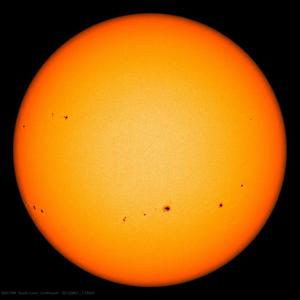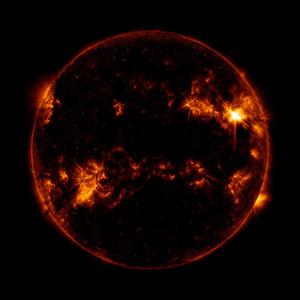Glossary term: Stellar Activity
Description: Stellar activity is a collective term for the different effects magnetic fields have on stars. Stars with strong magnetic fields have more starspots on their surface. Stellar magnetic fields are also likely to be the source of heat for the corona of a star so stars with stronger magnetic fields will have more X-ray and ultraviolet emission from their corona. Activity can also be seen in the spectrum of the star, particularly emission from the hydrogen alpha line. Taken together these effects loosely quantify the "activity" of a star. Massive stars (with spectral type O, B, and early A) typically have low activity. Activity then increases for lower mass stars, peaking at red dwarfs (M dwarfs). Young stars are more active than old stars. The Sun follows an 11-year activity cycle resulting in a variation in the number of sunspots.
Related Terms:
- B-type Star
- Corona
- Hydrogen
- Red Dwarf
- Solar Cycle
- Spectral Type
- Sunspot
- Sunspot Cycle
- Ultraviolet
- M-type Star
- Magnetic Field
- O-type Star
- X-ray
See this term in other languages
Term and definition status: This term and its definition have been approved by a research astronomer and a teacher
The OAE Multilingual Glossary is a project of the IAU Office of Astronomy for Education (OAE) in collaboration with the IAU Office of Astronomy Outreach (OAO). The terms and definitions were chosen, written and reviewed by a collective effort from the OAE, the OAE Centers and Nodes, the OAE National Astronomy Education Coordinators (NAECs) and other volunteers. You can find a full list of credits here. All glossary terms and their definitions are released under a Creative Commons CC BY-4.0 license and should be credited to "IAU OAE".
Related Media
Sunspots
Credit: NASA/SDO/HMI credit link
License: PD Public Domain icons
Solar flare
Credit: NASA/SDO credit link
License: PD Public Domain icons










